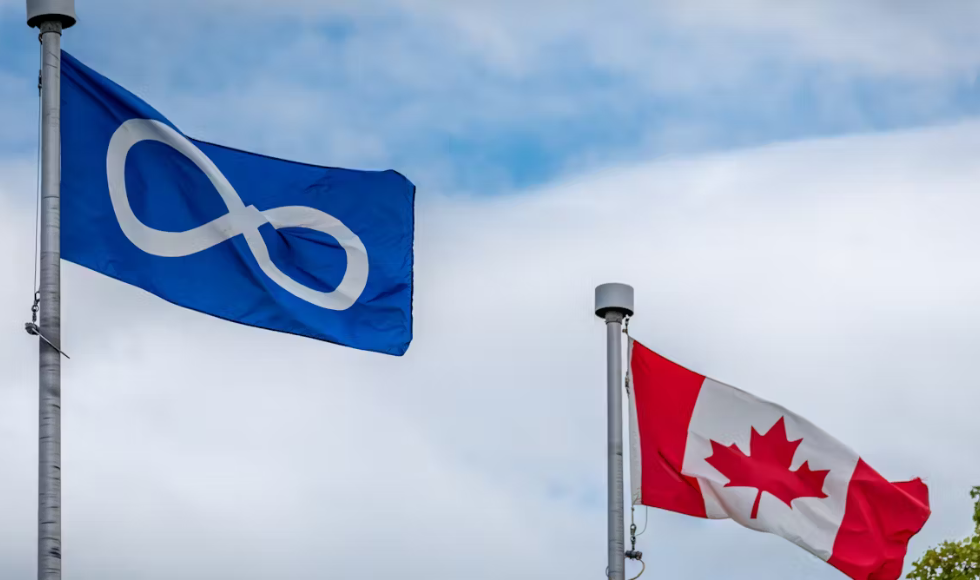Analysis: Underfunded and unstudied: The need for Red River Métis health research funding

Despite ongoing oppression by the settler state, the Red River Métis are often overlooked in federal settlement agreements involving Canada’s colonial past. (Shutterstock)
BY Alexandra Nychuk
August 2, 2024
![]() This article is republished from The Conversation under a Creative Commons license. Read the original article.
This article is republished from The Conversation under a Creative Commons license. Read the original article.
This year marks 139 years since the execution of Louis Riel by the Canadian government at the North-West Mounted Police barracks in Regina, Sask.
Much of Canada understands Red River Métis identity as connected to Riel. However we remember a complex Prairie history prior and following the resistances that our people are known for.
The ongoing impact of these experiences, which continue to affect Red River Métis health and well-being, can be heard in Métis communities and stories, but without adequate Métis health research funding, we don’t know to what degree.
The Red River Métis
Since Riel’s time, the Red River Métis have experienced many of the same atrocities as First Nations and Inuit, including the Indian Residential School System, Day Schools and tuberculosis sanatoriums.

In addition to these systemic attempts to eliminate us, our people survived the enforcement of the half-breed scrip system and the relocation of our families into Road Allowance Communities, many of which were later destroyed by settler governments.
Despite ongoing oppression by the settler state, the Red River Métis are often overlooked in federal settlement agreements involving Canada’s colonial past. Most recently, the Red River Métis were excluded from the ‘60s Scoop settlement despite the fact that many adoption programs included the Métis, such as Saskatchewan’s “Adopt Indian and Métis,” or AIM, project, which named us in its title.
Despite these shared experiences with other Indigenous Peoples and being recognized as “Aboriginal” rights holders under Section 35(2) of the Canadian Constitution, the Red River Métis’ battle for recognition continues. For example, we are the only Indigenous group whose health is not a federal responsibility. This means that the Métis are ineligible for the federal Non-insured Health Benefits (FNIHB) program for First Nations and Inuit that provides extended health coverage to include portions of dental and vision care, medical supplies and equipment, mental health counselling and some pharmaceuticals.
Additionally the FNIHB program provides the opportunity to collect health usage data which can be important in understanding health service needs. Nationally, Health is a provincial responsibility, but status First Nations and Inuit are exceptions. That means the federal government is billed by private entities (i.e. pharmacies, dental offices, registered mental health counsellors, etc.) that provide allied health care, or in some situations the provinces, creating additional opportunities to generate health data.
Distinction-based approaches
Our complex history and lack of recognition require approaches that extend beyond a one-size-fits-all approach to Indigenous relations and reconciliation. This is often referred to as “distinctions-based approaches,” which honour the unique needs and circumstances of First Nations, Inuit and Métis.
In 2021, the federal government announced it would co-develop distinction-based Indigenous health legislation with First Nations, Inuit and Métis. While I was excited for the prospect of Red River Métis health being recognized, as a researcher, I was also met with anxiety about the lack of accurate population-level health data we have to inform these decisions. This is due to problematic Statistics Canada census collection practices. These largely still rely on self-identification, which makes them prone to identity fraud.
For example, in the 2021 census only one-third of individuals who are Métis stated they were registered to a Métis nation or community. The United Nations asserts that in addition to self-identification, acceptance by an Indigenous community or nation are critical attributes to defining Indigeneity. According to the 2021 census, there are 624,220 Métis in Canada, 1,048,405 First Nations and 70,545 Inuit.
Underfunding of Métis health research
Another growing barrier that contributes to the lack of Red River Métis-specific health data is chronic underfunding across Canadian universities. In Canada, the Tri-agencies (Canadian Institutes of Health Research, Social Sciences and Humanities Research Council and the Natural Sciences and Engineering Research Council of Canada) are the federal funding agencies responsible for post-secondary research funding across Canada.
The Canadian Institutes of Health Research (CIHR) consists of 13 institutes that are responsible for funding and supporting health research in Canada. Within the CIHR Strategic Plan 2021-31, Priority C is to accelerate the self-determination of Indigenous Peoples in health research. It states that the “CIHR will embrace a distinctions-based and culturally safe approach.”

However, in an online webinar on June 26, CIHR estimated that from the funding years of 2017-18 to 2022-23, Métis-specific grants account for only 7.3 per cent of distinctions-based research, compared to 15.9 per cent for Inuit, 64.2 per cent for First Nations and 12.5 per cent for projects that include multiple categories.
This stark disparity in funding allocation underscores the urgent need for more equitable distribution of research funding. As a Red River Métis PhD candidate, my doctoral research accounts for roughly four per cent of the Métis-specific CIHR grants distributed during this six-year period.
Additionally, the CIHR over the same six-year time period dedicated only $11.3 million to Métis-specific research. This is less than half of the Inuit ($24.8 million) and nearly one-seventh of First Nations ($75 million) investments.
The Red River Métis, who have comparatively less self-determination over their health and significantly less health infrastructure than First Nations and Inuit, are also receiving considerably less health research funding. This is largely because Métis health is not recognized or treated as distinct from other Canadians.
The point of these comparisons is not to diminish the need for First Nations and Inuit health research. Instead, they underscore the need for more distinctive approaches to understanding the realities of diverse Indigenous peoples in what is now called Canada.
The need for comprehensive data
Now more than ever we need Red River Métis health data that is conducted ethically and is respectful of both individual and collective rights, and accurately represents our distinct population. Likely this will require a comprehensive strategic health data management plan that crosses jurisdictions, considers the complexities of data sovereignty and ultimately understands the nuances of who we are.
In Riel’s address to the court during his trial that ultimately resulted in his hanging, he made several remarks about sickness overcoming not only his people but the entirety of the North-West. Nearly 140 years later, I would like to say that our people are healthy, but the reality is that outside of our personal lived experiences as Red River Métis, we simply do not know.
Alexandra Nychuk, PhD Candidate, Department of Health, Aging & Society, McMaster University
This article is republished from The Conversation under a Creative Commons license. Read the original article.


